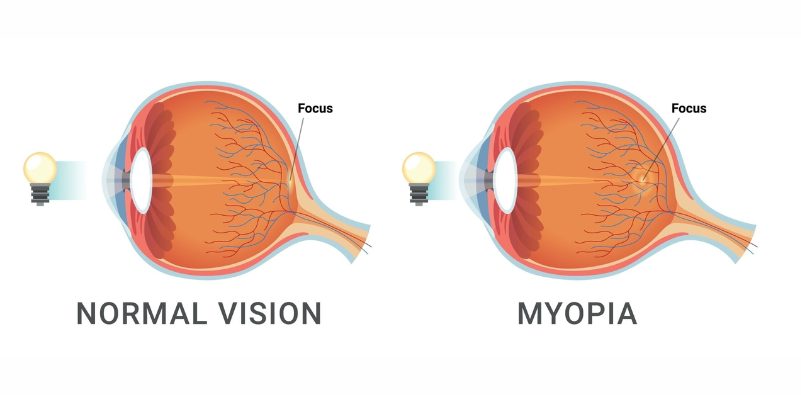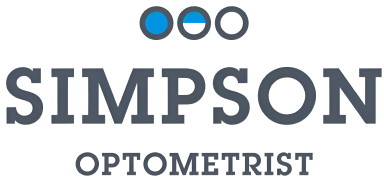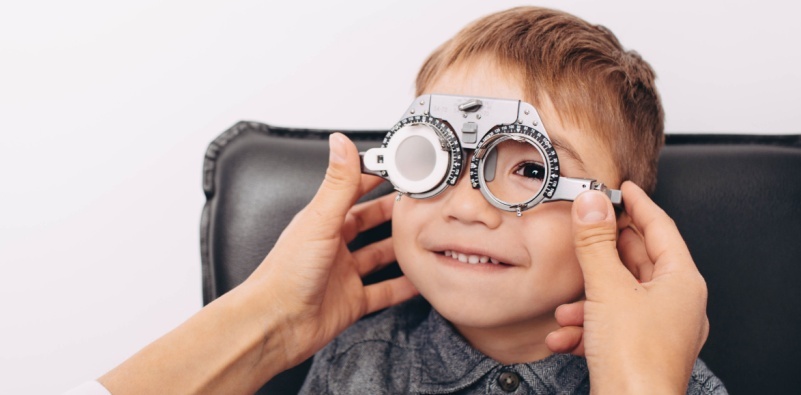From following their passions to fulfilling their potential, who doesn’t want their child to do well in life? Healthy vision can go a long way to helping youngsters thrive, from academic achievement to social confidence.
In this blog, we’ll explore short sightedness in children. What is it, and what steps can we take to manage it? Read on to find out how we can help keep your child’s eyes healthy and their future bright.
What is short-sightedness?

Myopia, commonly known as short-sightedness, affects longer-distance vision. While close-up items are clear, objects in the distance can appear blurry. It typically emerges during childhood and happens when the eyeball grows slightly too long or the cornea becomes too curved, causing light to focus in front of the retina rather than directly on it.
Early detection and proper management of myopia are important. Without intervention it can develop into ‘high myopia’, increasing the risk of certain eye conditions later in life, including retinal detachment, when the retina comes loose, and glaucoma which affects the optic nerve. Both can lead to sight loss if left untreated.
Spotting the signs of myopia
There are many signs that you should be aware of that could indicate short sightedness in children is present. These include:
- squinting or struggling to read text on whiteboards
- positioning themselves close to screens
- holding books or devices near their face
- complaining of frequent headaches after visual tasks
- excessive eye rubbing.
These symptoms can make schoolwork, sports and other activities challenging.
Managing myopia effectively
When it comes to your child’s eyesight, there’s no need to worry. With the right steps and a tailored treatment plan, we can help manage myopia effectively. Here’s how:
Glasses for short sightedness like MiYOSMART and MyoFix use innovative technology to create peripheral defocus, helping to slow myopia progression whilst providing clear vision.
For children who don’t want to wear glasses, there are contact lens options available. MYLO and MiSight contact lenses don’t just correct vision; they actively work to manage myopia. These lenses are made specifically for children’s needs, ensuring comfort and effectiveness.
Did you know that natural light can help slow the progression of myopia? Outdoor play also encourages kids to switch their focus between near and far objects, helping their eyes develop as they should.
Too much screen time can make myopia worse by encouraging prolonged eye strain and elongation of the eyeball. Try creating screen-free zones or setting specific “tech-free” times during the day.
Schedule their next eye exam with us
With projections suggesting half the global population may be short-sighted by 2050, it’s important to take proactive steps now. An annual eye test (or more frequently if advised) is important. Regular check-ups help monitor your child’s eye health and ensure their treatment plan is working effectively.
At Simpson’s Optometrists, we can help manage the condition with a range of treatments. Book a children’s eye test in Glasgow with our team today—it’s a small step that could make a big difference.





